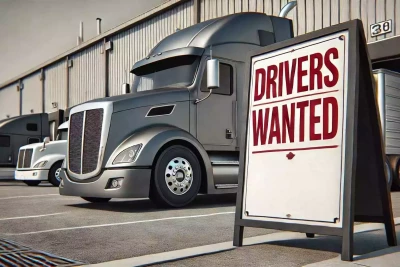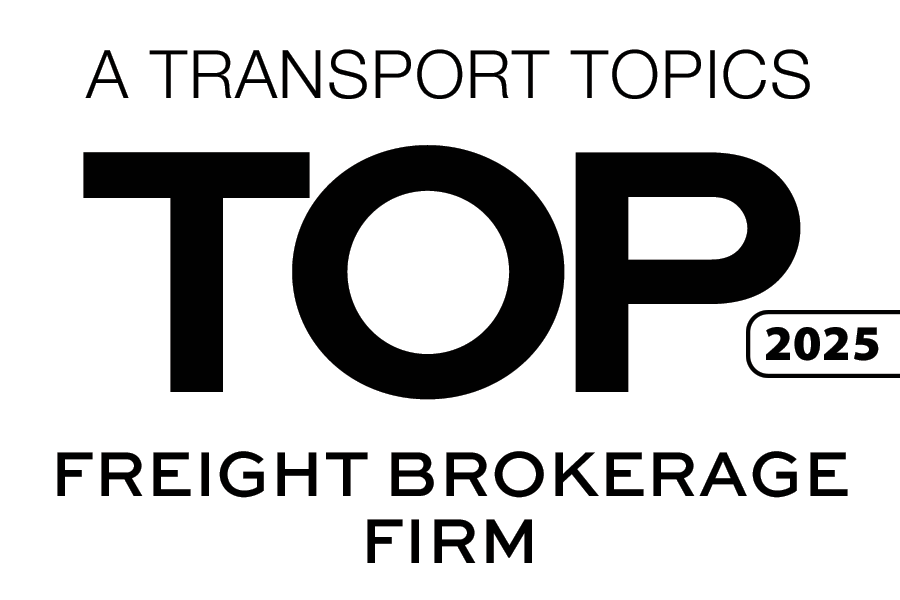Economic Shifts in Freight and Beyond: What to Expect in 2025
October 1, 2024
 As the freight industry looks ahead to 2025, there’s a growing focus on rate cuts from the Federal Reserve and their impact on the broader economy. With the Fed signaling a shift in policy through this year’s initial rate reduction, it’s essential for industry professionals to understand the implications and prepare for what’s to come.
As the freight industry looks ahead to 2025, there’s a growing focus on rate cuts from the Federal Reserve and their impact on the broader economy. With the Fed signaling a shift in policy through this year’s initial rate reduction, it’s essential for industry professionals to understand the implications and prepare for what’s to come.
The Federal Reserve has been on a mission to cool inflation by raising interest rates, a strategy that’s now showing signs of success. Industry experts predict that 2025 will be a transitional year which should include a series of planned rate cuts. These won’t be impulsive moves, but rather calculated steps aimed at stabilizing the economy. But don’t expect to see interest rates drop to the near-zero levels of the past. The historic lows experienced in recent years were part of a unique economic experiment that is unlikely to be repeated.
In the freight industry, lower rates can be a double-edged sword. While rate cuts can stimulate demand by lowering borrowing costs for businesses, they can also signal a slowdown in the broader economy, which could impact freight volumes.
The conversation around interest rates can be confusing, especially for those who have only experienced the ultra-low rates of the past decade. While a 7% mortgage rate may seem high to some, it’s important to keep things in perspective. Historically, rates were much higher. Today’s rates, although higher than recent lows, are still moderate by historical standards.
“In the 80s when we really had serious inflation, it was 20%. Now it’s around 5%,” explains Dan North, Senior Economist at Allianz Trade North America.
For freight professionals, this means adjusting expectations. While higher rates could temper demand in some sectors, they may also bring greater stability as the economy shifts away from a period of artificially low borrowing costs.
What effect will falling interest rates and rising unemployment have on demand for freight services? Get answers in the latest episode of the Stay In Your Lane Podcast from Triple T Transport.
One of the key concerns for 2025 is the potential slowdown in the labor market. While the freight industry has been resilient in the face of economic challenges, any significant shifts in employment levels could have a ripple effect. A rise in unemployment could lead to reduced consumer spending, which in turn would lower demand for freight services.
“I’m a little concerned about the employment market,” warns North. “The labor market needs to keep growing, but I’m seeing signs that we’re slowing a little too fast.”
North and other experts are closely monitoring an economic indicator known as the “S rule,” which tracks the speed at which unemployment rises. If unemployment increases too rapidly, it could be a sign of a deeper economic slowdown. This could signal a tightening of available business opportunities in the transport sector, making it crucial to stay agile and adaptable in an uncertain environment.
Looking beyond interest rates and employment, freight professionals should also be aware of the potential impact of geopolitical events and the upcoming U.S. elections. With a divided Congress likely, the legislative gridlock could actually provide a level of stability for businesses. However, unexpected geopolitical developments—such as shifts in trade policies or supply chain disruptions—could throw a wrench into the industry’s recovery.
Decision makers in our industry should keep a close eye on international relations, particularly in key markets like Asia and Europe. Any disruptions could lead to sudden changes in freight demand, necessitating quick adaptations in strategy.
 There has also been a noticeable increase in the number of companies filing for bankruptcy over the past two years. This uptick is particularly pronounced in sectors like retail and construction. However, it’s important to note that the recent rise comes from historically low levels. While concerning, this increase is part of the natural ebb and flow of the business cycle, and the economy is in a good position to manage it.
There has also been a noticeable increase in the number of companies filing for bankruptcy over the past two years. This uptick is particularly pronounced in sectors like retail and construction. However, it’s important to note that the recent rise comes from historically low levels. While concerning, this increase is part of the natural ebb and flow of the business cycle, and the economy is in a good position to manage it.
For the freight industry, this trend underscores the importance of vetting clients and maintaining strong relationships with financially stable partners. Transport is closely tied to sectors like retail and construction, so any instability in these areas could have a direct impact on freight volumes.
As 2025 approaches, freight professionals need to stay vigilant. While rate cuts could provide some relief, the broader economic picture remains uncertain. Employment concerns, geopolitical risks, and rising bankruptcies all add to the complexity of the environment.
“2024 is going to be a bit of a tricky year, but by the end of 2025, we should be in a much healthier economic place,” says North. “It’s going to depend on how the Fed navigates this next phase.”
The key to success in 2025 will be flexibility. Those who can adapt to changing conditions, manage risks effectively, and stay informed about macroeconomic trends will be best positioned to navigate the challenges ahead. No matter what the future holds for the economy, count on Triple T Transport to deliver the world-class 3PL services our partners depend on in good times and bad.














